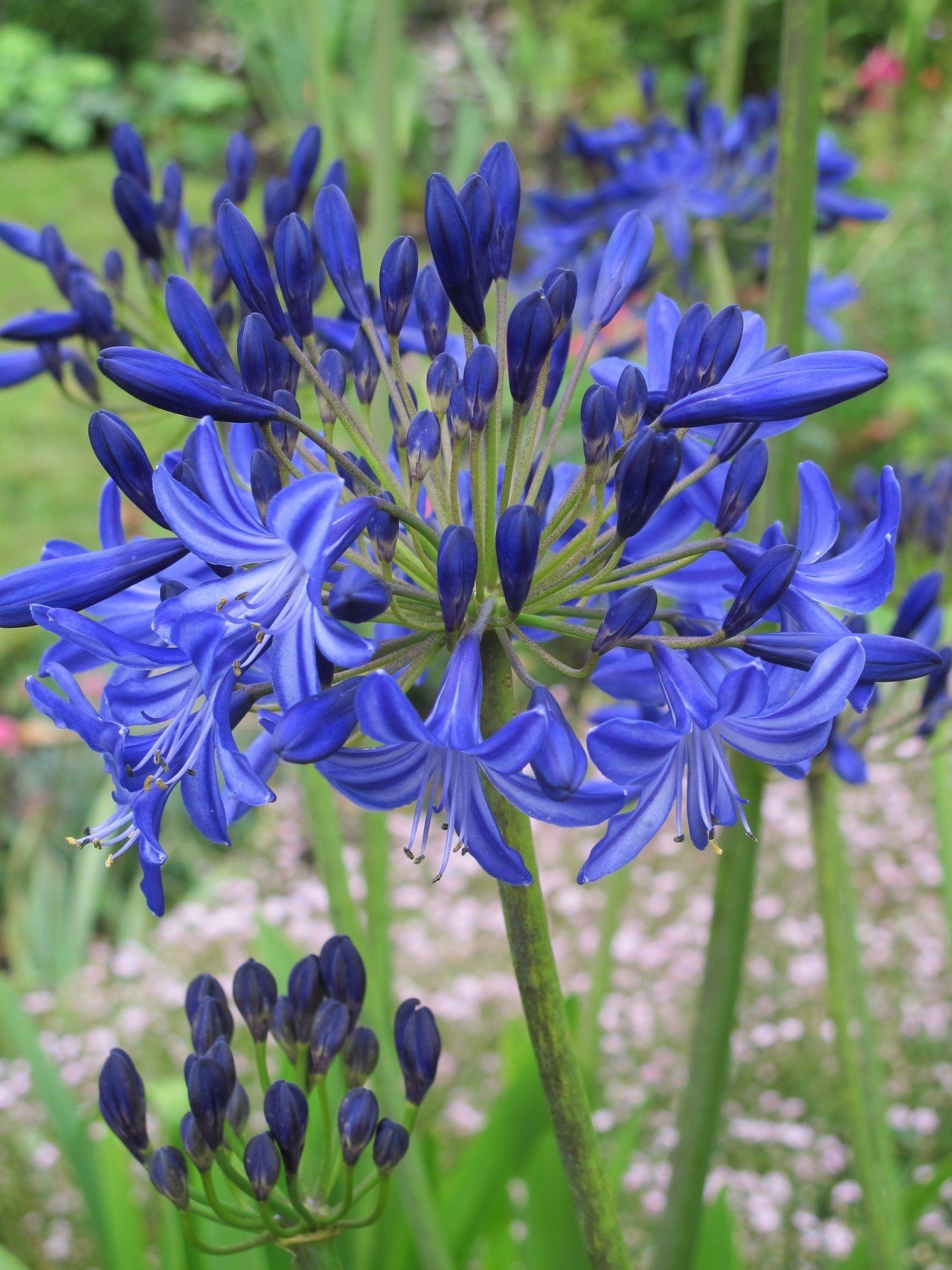Spectacular Agapanthus: Enhancing Your Garden's Elegance
Grasping the Art of Agapanthus Treatment: Essential Actions for Healthy And Balanced Growth and Vivid Flowers
In the world of horticulture, the cultivation of agapanthus stands as a rewarding venture for those who look for to nurture these classy blooming plants. With their striking blooms and elegant foliage, agapanthus has actually caught the focus of gardeners worldwide. However, accomplishing optimal development and dynamic blooms requires a nuanced strategy that includes various crucial actions. From choosing the right range to understanding trimming techniques, the trip towards cultivating prospering agapanthus plants is multifaceted and holds the crucial to opening the full possibility of these botanical treasures.

Picking the Right Agapanthus Variety

When choosing the ideal Agapanthus selection for your yard, take into consideration elements such as climate viability, blossom color, and growth practice. Agapanthus, frequently recognized as Lily of the Nile or African lily, can be found in a variety of colors ranging from shades of blue and purple to white. Choose a blossom shade that complements your existing garden scheme to develop an unified landscape. Furthermore, think about the climate in your region to make sure the Agapanthus range you choose can flourish in your specific problems. Some ranges are extra forgiving of chilly temperatures, while others choose warmer climates. Understanding the development behavior of different Agapanthus varieties is crucial for correct positioning within your garden. Some selections have a clumping growth habit, perfect for containers or boundaries, while others have a more dispersing nature, appropriate for ground cover or mass plantings. By carefully evaluating these variables, you can select the perfect Agapanthus selection to improve the beauty of your yard.
Perfect Planting Conditions
Thinking about the optimum environmental demands is necessary for effective Agapanthus cultivation. Agapanthus plants are sensitive to chilly temperature levels and should be safeguarded from frost during winter season months.
To make certain healthy development and lively blooms, plant Agapanthus light bulbs at a deepness of concerning 2-4 inches and room them 8-12 inches apart. Mulching around the base of the plants aids preserve dampness and subdues weed development.
Watering and Feeding Tips
Keeping appropriate wetness levels and offering vital nutrients are crucial elements in the care routine for Agapanthus plants. It is critical to strike an equilibrium when it comes to sprinkling Agapanthus. These plants choose consistently damp soil but are at risk to root rot if overwatered. During the expanding period, water deeply once a week, ensuring the dirt is well-draining to stop waterlogging. In hotter climates or throughout periods of drought, even more frequent watering might be needed to keep the dirt evenly wet. Nonetheless, lower watering in the wintertime to protect against water logged problems.
Feeding Agapanthus is important for advertising healthy and balanced development and prolific blossoms. Use a balanced plant food, such as a 10-10-10 formula, in the early spring as new growth arises. Repeat this application every 6-8 weeks throughout the growing period. Stay clear of excessive fertilization, as it can result in lavish foliage at the expenditure of blossoms. Constantly adhere to the maker's instructions for proper dilution and application methods. By adhering to these watering and fertilizing suggestions, you can guarantee your Agapanthus plants grow and generate vibrant, durable blooms.
Pruning Strategies for Agapanthus
Pruning Agapanthus plants at the proper times and with correct methods is important for maintaining their health and wellness and promoting ideal growth and flowering. The ideal time to trim Agapanthus remains in late winter season or very early spring before brand-new growth arises. Begin by getting rid of any type of dead or yellowing fallen leaves near the base of the plant. Cut them as short as possible without damaging the emerging shoots.
For flowered stems, wait until the blooms have withered and after that cut them back to the base. This not just cleans up the plant's look however likewise motivates the development of new blossom buds. Deadheading invested flowers can additionally reroute the plant's power into producing more blooms as opposed to establishing seeds. Nonetheless, if you wish to gather seeds for propagation, leave some flowers to fully grown and completely dry on the plant.
Bear in mind to use clean, sharp devices read review to make exact cuts and decrease the risk of presenting illness. Agapanthus. Normal trimming will help maintain your Agapanthus looking healthy and balanced and neat while ensuring a plentiful screen of stunning blooms
Managing Typical Pests and Illness
After making certain proper pruning techniques for Agapanthus, it is necessary to resolve usual bugs and diseases that can affect the health and vigor of these plants. One common parasite that impacts Agapanthus is the Agapanthus gall midget.
In addition, Agapanthus plants can suffer from root rot if they are planted in badly draining pipes check out this site soil. By being alert and taking punctual activity against conditions and parasites, you can assist your Agapanthus plants prosper and generate dynamic flowers. Agapanthus.

Verdict
In final thought, grasping the art of agapanthus care involves picking the ideal range, giving optimal growing conditions, proper watering and fertilizing, appropriate pruning strategies, and attending to typical parasites and conditions. By adhering to these necessary actions, you can make certain healthy growth and dynamic blooms for your agapanthus plants. Keep in mind to routinely keep track of and maintain your plants to promote their overall well-being and durability.
To make sure healthy development and lively flowers, plant Agapanthus bulbs at a deepness of about 2-4 inches and area them 8-12 inches apart. By complying with these see here now watering and fertilizing tips, you can guarantee your Agapanthus plants prosper and generate vibrant, lasting blossoms.
One common insect that affects Agapanthus is the Agapanthus gall midge. Additionally, Agapanthus plants can experience from root rot if they are planted in poorly draining dirt. By following these essential actions, you can make certain healthy development and vibrant flowers for your agapanthus plants.